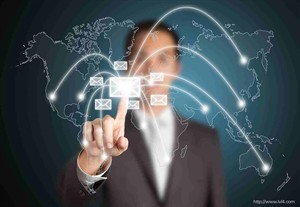Translating Inbound Marketing Content: Email
Most leading market research firms confirm that almost 75% of global internet users conduct research online on the products they want to buy so it is very important to have a website that is rich in content and attracts, engages and educates the consumer.
It is critical that the same approach applied to English websites is also applied to sites that need to speak to a global audience so translating and localizing compelling website content into the languages of the regions and locales you are targeting is critical to the success of any organization that wants to sell their products and services globally.
As part of our blog series on translating inbound marketing content this blog will cover translation of emails.
From Volume to Value

Until recently, marketers aimed to reach as many prospects as possible via traditional outbound marketing efforts such as email blasts, trade shows, print ads and telemarketing. This method, described by some industry experts as ‘noise’, is increasingly seen as disruptive and intrusive by the consumers who like to gather information first and then make an informed decision about a possible purchase.
Inbound marketing turns the noise into value by providing an engaging and informative website with content that adds value to a buyer’s decision journey, and in turn, increases leads for a company. Inbound marketing emails play an important role in this process. The emails should provide value to the customer by attracting, informing and engaging them. Translating those emails is an integral part of any global marketing strategy, and will pay great dividend if done correctly, by reaching and attracting your global audiences.
After Content Creation Comes Localization
A lot has been said about creating valuable content that engages and delights your website visitors. It is equally important to do the same for your global audience by creating content in your target languages. Whether it is a landing page, a series of eBooks and white papers, email campaigns or blogs, localizing your content will attract a more global audience and convert international visitors to loyal followers and eventually buyers. Customizing your content to global personas is very important to increase your brand’s credibility and authenticity on a global level.
Email Marketing: Inbound or Outbound?
I read a blog by HubSpot’s Ellie Mirman several years ago in which she asked several attendees at the MarketingSherpa Email Summit: “Email marketing: inbound or outbound?” The overall consensus was that email marketing is inbound when it is part of a conversation where a company responds appropriately and organically to highly qualified leads that have reached out seeking more information or insight. I believe that answer still holds true today.
Localizing your Email Marketing to Maximize ROI
One of the most important aspects of global email campaigns is the fact that emails need to be adapted to global personas and take into consideration linguistic and cultural differences and nuances in each country you’re trying to conduct business in. Some key factors that will determine the success of your email marketing efforts:
- Use appropriate imagery, colors and graphics.
- Utilize a professional translation agency that deploys only native speakers that are subject matter experts and reside in-country as they are most likely to have “their finger on the pulse” and have the necessary knowledge of idiomatic expression and latest trends in their home countries.
- Be sensitive to cultural differences and even country-specific differences within one language, such as the differences between French for France and French for Canada.
- Be aware of religious factors and traditions and don’t share images and photos of a provocative nature when sending localized emails to countries such as Turkey, Saudi Arabia or the UAE.
Tips for Great Inbound Marketing Emails
HubSpot, one of the pioneers and leaders in the inbound marketing automation world recently compiled and shared a list of the top 5 elements that make for a really compelling email:
- Be Relevant: have something to say that adds value to the conversation.
- Good timing: provide the exact information at the exact time it’s needed.
- Be Creative: follow someone’s newsletter or blog; dig in and become a fan; be honest in your praise and ask for their feedback on what you’ve been working on.
- Be Credible: impress without bragging; competence and proof over arrogance and fluff.
- Personalize: really show interest in the person you are trying to reach and invest time and effort personalizing the message. Be authentic and don’t succumb to clichés.
Summary
Any comprehensive inbound marketing strategy includes content-rich websites, eBooks and white papers, and email campaigns that are used to start the conversation and contribute overall value to the customer by engaging and delighting. It is equally important to pay as much attention to your global audiences as your English speaking one when trying to attract them to your site by localizing all of your inbound content that is relevant for the countries and locales you are targeting, and sending compelling emails that are appropriately localized, timely, authentic and culturally relevant.
